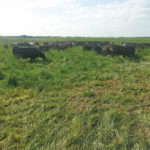
Target sustainable grazing
Cover crops and holistic management practices on the Richards' farm in Saskatchewan
Garry Richards is seeing positive results from holistic management on the farm where he grew up near Bangor, Sask. He and his wife Lynn and three children are making it work with little outside input. “This farm was homesteaded in 1902 by my grandfather. My mother and father farmed here, then I went away to […] Read more

Early treatment vital to fight septicemia in young calves
Animal Health: Management is your best bet at preventing infection
Newborn and young calves are often vulnerable to systemic infection if they fail to obtain adequate passive transfer of temporary immunity from the dam’s antibodies in the colostrum. Systemic infection results when bacteria or their toxins overwhelm the body’s defenses and spread throughout the body via the bloodstream. According to Claire Windeyer, an assistant professor […] Read more
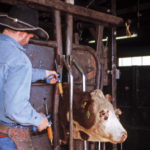
Pre-breeding vaccinations for cows and bulls
Health with Heather Smith Thomas
Some diseases affect reproduction, interfering with the cow’s ability to carry a calf to term. It’s best to try to prevent these diseases by making sure cows and bulls have adequate immunity before breeding season. These vaccinations will vary, depending on specific risks in a certain herd, and timing will vary, depending on the calving/breeding […] Read more
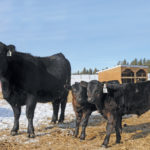
Calving at Tannas Ranch
A family-run, fourth-generation ranch in Alberta
Mark and Ingrid Tannas, their son Luke and his wife Ceanna run 300 purebred Angus and 125 commercial cows at their ranch west of Water Valley, Alta. Mark is the fourth generation on the ranch. “Our family has been here about 50 years, and we built our first calving barn about 40 years ago. It […] Read more

Two calving seasons at Lewis Farms
Jordan Buba manages the calving at Lewis Farms near Edmonton, Alta. She is a fourth-generation family member at the farm. “We run about 1,000 cows along with the farming — grain and seed potatoes. We have two calving seasons, with two groups of cows. We calve about 400 cows in December-January and about 600 in […] Read more
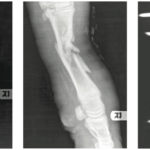
Dealing with broken bones in calves
There are many options for setting a broken bone
Occasionally cattle suffer fractures, and it’s generally a leg bone. Often it’s a young or newborn calf, and the fractured limb should be cast or splinted for proper healing. When Dr. Andy Acton with Deep South Animal Clinic at Ogema, Sask., gets a phone call from a producer about a possible fracture, he asks about […] Read more
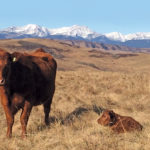
Calving fits with year-round grazing at Chinook Ranch
Longview, Alta. ranch in operation since 1950
Stephen Hughes raises beef cattle near Longview, in southwestern Alberta. “Our family has been here since the late 1940s. My grandfather came from England in 1928 and had this ranch put together by 1950. My dad, Jim, is still involved in the day-to-day management of the ranch. I am third generation, and when I got […] Read more
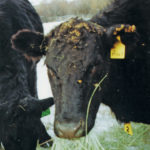
Beating back burdock
Invasive weed species can affect both pasture and profit
Burdock is an invasive plant that causes problems for livestock and crops, and is generally considered a noxious weed. The tall burdock plant, a native of Eurasia, is a biennial, which means it lives for two growing seasons. The first year, it merely grows leaves and accumulates food reserves in its roots, like a carrot. […] Read more
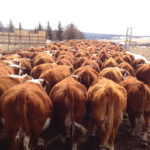
Breeding no-nonsense cattle for any environment
Al and Lori Fenton have been raising Herefords at Irma, Alta., for a long time. “My mom and dad started this outfit in 1946,” says Al. “We started in the Hereford breed because at that time it was the most adaptable breed for our environment. Like any other breed, it needed some revolutionary selection and […] Read more
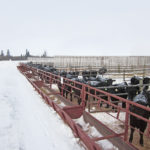
Some thoughts on backgrounding
Research scientist says it's all about cost-effectiveness
With feeder markets tumbling this fall, many people were thinking about holding onto their calves a bit longer in hopes of better prices ahead. Bart Lardner, research scientist at the Western Beef Development Centre and an adjunct professor at the University of Saskatchewan, says there are several programs that can be used to grow weaned […] Read more


